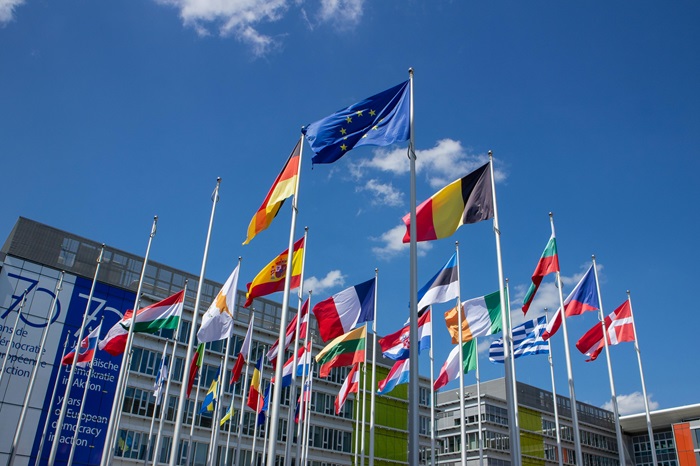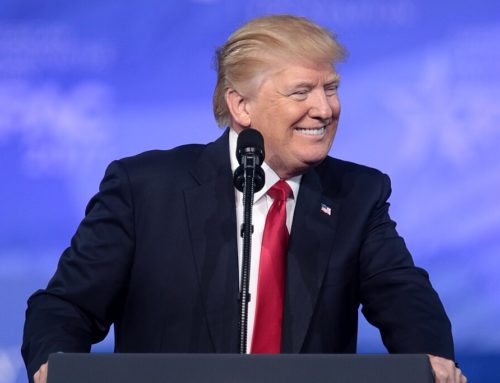1. London Leads UK Inward Investment Regional Competitiveness Index
In a recent assessment of the UK’s regional attractiveness for foreign direct investment, London and Northern Ireland have emerged as the top performers. The UK Inward Investment Regional Competitiveness Index, which measures the ability of regions to attract greenfield FDI projects relative to their economic size, highlights the significant achievements of these two regions.
London: The Dominant Force
Unsurprisingly, London continues to dominate the UK’s foreign investment landscape. With a competitiveness score of 1.69, London attracts 1.69 times its fair share of national greenfield FDI projects, given the size of its economy. This is a testament to the capital’s robust economic infrastructure, diverse talent pool, and its status as a global financial hub. In 2022 alone, London was home to 411 international company expansions, making it the third-largest FDI recipient city globally, behind only Dubai and Singapore.
Northern Ireland: Punching Above Its Weight
Northern Ireland, despite being the UK’s smallest region by population, has shown remarkable competitiveness with a score of 1.64. This indicates that Northern Ireland is attracting significantly more FDI than would be expected for its economic size. Key source markets for FDI into Northern Ireland include the United States and Ireland, which together accounted for more than half of the inbound investments in 2022. Notable investments include the establishment of a new technology and product hub by US-based digital company Insider Inc., creating 50 jobs, and a new engineering centre by Harness, generating 80 jobs over three years.
The Broader Picture
While London and Northern Ireland lead the index, other regions have also shown varying degrees of competitiveness. Scotland, for instance, scored 1.23, reflecting its ability to attract a higher proportion of FDI relative to its GDP. However, many other regions scored below one, indicating they receive less FDI than would be expected given their economic output.
Conclusion
The success of London and Northern Ireland in the UK Inward Investment Regional Competitiveness Index underscores the importance of strategic economic planning and the creation of an attractive business environment. As these regions continue to draw significant foreign investments, they set a benchmark for other regions aiming to enhance their competitiveness on the global stage.
2. Nigeria’s Digital Special Economic Zones

oluka levi Pexels
In recent years, Nigeria has embarked on an ambitious journey to transform its economic landscape through the establishment of digital Special Economic Zones (SEZs). These zones are set to become the cornerstone of Africa’s burgeoning tech and services sectors, positioning Nigeria as a leader in innovation and economic growth.
New Era for SEZs
Historically, Nigeria’s SEZ framework has focused on export-oriented manufacturing. However, with the global economy increasingly driven by technology and services, Nigeria is shifting its focus. The launch of a steering committee by President Bola Tinubu in July 2024 marked the beginning of this transformation. This committee aims to develop digital free zones that cater specifically to tech and services-based businesses
Innovation Through Regulation
Countries like Dubai, Estonia, and the US state of Delaware have successfully implemented creative regulatory schemes to attract leading firms and entrepreneurs. Nigeria is poised to follow suit. Its fintech sector, which accounts for about one-third of Africa’s market, is a testament to its potential. Companies like Flutterwave, Paystack, and Andela have already made significant strides, showcasing Nigeria’s vibrant entrepreneurial spirit.
Infrastructure and Incentives
One of the critical challenges for Nigeria’s tech sector has been inadequate infrastructure. The digital SEZs aim to address this by providing high-speed bandwidth, uninterrupted power supply, and other essential utilities. The Itana digital SEZ in Lagos, Africa’s first licensed digital free zone management company, is leading by example. It is developing a tech campus in the Lekki free zone, designed to attract and retain top talent through eco-friendly, mixed-use facilities.
Pan-African Ambitions
Nigeria’s digital SEZs are not just about local growth; they are a strategic move to leverage the African Continental Free Trade Area Agreement. This initiative aims to make Nigeria a focal point for pan-African business, fostering economic integration across the continent.
Collaboration and Challenges
The success of these digital SEZs hinges on collaboration between the government and the private sector. The steering committee includes senior ministers and private sector leaders from organizations like Africa Finance Corporation, Future Africa, PwC Nigeria, and Itana. Despite the promising outlook, challenges remain. Economic integration across Africa is slow, and much of the continent’s top talent is educated and often remains overseas.
Conclusion
Nigeria’s digital SEZs represent a bold step towards economic transformation. By creating a conducive environment for tech and services-based businesses, Nigeria can attract global investment, talent, and innovation. If successful, these zones could generate thousands of jobs and position Nigeria as Africa’s premier destination for business and innovation.
3. The Decline of US Greenfield FDI

nout gons Pexels
Introduction
Greenfield Foreign Direct Investment (FDI) has long been a critical driver of global economic growth, enabling companies to establish new operations in foreign markets. Historically, the United States has been a dominant source of greenfield FDI, leveraging its economic might and innovative capacity to influence global investment patterns. However, recent trends indicate a significant shift, with the US’s role as a leading source of greenfield FDI weakening.
The Shift in Global FDI Trends
Recent data reveals a notable decline in the US’s share of global greenfield FDI. In 2023, US companies accounted for only 14% of global greenfield FDI capital expenditure, a sharp drop from nearly 30% in 2021. This decline contrasts with the rise of other countries, particularly China, which saw its share increase to almost 12% in 2023. This shift underscores a broader reconfiguration of global investment flows, with emerging markets and other developed economies becoming more prominent destinations for greenfield FDI.
Factors Contributing to the Decline
Several factors have contributed to the decline in US outbound greenfield FDI:
- Domestic Investment Incentives: Policies such as the Inflation Reduction Act and the Chips Act have incentivised US companies to invest more domestically. These measures aim to bolster domestic manufacturing and technological capabilities, reducing the need for overseas investments.
- Supply Chain Considerations: The disruptions caused by the COVID-19 pandemic and geopolitical tensions have led US companies to prioritise domestic investments to ensure supply chain stability and reliability.
- Economic Conditions: The strong US economy and rising asset prices have made domestic investments more attractive. High returns on domestic investments have further discouraged US companies from seeking opportunities abroad.
Implications for Global Economy
The decline in US outbound FDI has several implications for the global economy:
- Shift in Investment Destinations: As US companies reduce their overseas investments, other countries, particularly in Asia and Europe, are becoming more attractive destinations for greenfield FDI. This shift is likely to enhance the economic growth and development of these regions.
- Impact on US Influence: The reduction in US outbound FDI could diminish the country’s economic influence and leadership in innovation and technology on the global stage. This shift may also affect the US’s ability to shape global economic policies and standards.
Future Outlook
Looking ahead, several factors could influence the future of US greenfield FDI:
- Potential Reversals: Changes in domestic economic conditions or policy shifts could lead to an increase in US outbound FDI. For instance, if domestic investment incentives are reduced or if the US economy faces a downturn, companies might seek growth opportunities abroad.
- Global Economic Trends: Broader global economic trends, such as geopolitical tensions and economic growth forecasts, will also play a crucial role in shaping future FDI flows. The ongoing competition between the US and China for economic dominance will be a key factor to watch.
Conclusion
The weakening of US hegemony as a source of greenfield FDI marks a significant shift in global economic dynamics. Understanding these trends is crucial for policymakers, businesses, and investors as they navigate the evolving landscape of international investments. As the global economy continues to change, staying informed about these developments will be essential for making strategic decisions.
4. Japanese Automakers Accelerate Transition to Zero-Emission Vehicles

In recent years, the global automotive industry has been undergoing a significant transformation towards zero-emission vehicles (ZEVs). Japanese automakers, known for their innovation and engineering prowess, are now being encouraged to expedite this transition to meet both environmental goals and market demands.
The Push for Zero-Emission Vehicles
The urgency for Japanese automakers to accelerate their transition to ZEVs comes from multiple fronts. Governments worldwide are tightening regulations on vehicle emissions, with many countries setting ambitious targets for phasing out internal combustion engines. For instance, the European Union has adopted stringent CO2 emission standards, requiring 100% ZEV sales by 2035 for passenger cars and light commercial vehicles. Similarly, the United States Environmental Protection Agency has proposed standards aiming for 60% ZEVs by 2030.
Current Progress and Challenges
Despite their reputation for technological advancement, Japanese automakers have been slower to embrace the shift compared to their global counterparts. According to a report by the International Council on Clean Transportation, five of the six largest automakers lagging in the transition to ZEVs are headquartered in Japan. Companies like Toyota, Nissan, and Honda have made commitments but still trail behind leaders like Tesla and BYD in terms of market share and technological development.
Strategic Initiatives
To address these challenges, Japanese automakers are ramping up their efforts. Toyota, for example, has announced plans to introduce a range of battery electric vehicles (BEVs) and aims for 32% of its global sales to be ZEVs by 2030. Nissan and Honda have set more ambitious targets, aiming for 50% and 80% ZEV sales by 2030 and 2035, respectively.
Moreover, collaborations and innovations are key to this transition. Toyota, Mazda, Subaru, and other Japanese manufacturers are investing in next-generation energy sources such as hydrogen and ammonia to reduce their carbon footprint. These efforts are part of a broader strategy to achieve carbon neutrality by mid-century.
The Road Ahead
The transition to zero-emission vehicles is not just about meeting regulatory requirements; it is also about staying competitive in a rapidly evolving market. As consumer preferences shift towards more sustainable options, Japanese automakers must accelerate their efforts to innovate and lead in the ZEV space.
In conclusion, while Japanese automakers have made significant strides, there is a clear need for increased urgency and commitment to fully embrace the zero-emission future. By leveraging their technological expertise and strategic partnerships, they can play a pivotal role in the global effort to combat climate change and promote sustainable transportation.
5. Trump’s New Trade Chief Advocates for US-UK Trade Deals

Gage Skidmore
In a significant development, Donald Trump’s newly appointed trade chief, Jamieson Greer, has voiced strong support for forging new trade agreements between the United States and the United Kingdom. This move comes as the Trump administration urges the UK to pivot away from the European Union and embrace closer economic ties with the US.
US-UK Trade Surplus
The UK reported a total trade surplus of £72.1 billion with the US. The UK’s trade in goods surplus was £4.5 billion, while its trade in services surplus was £67.5 billion.
UK-Europe Trade Deficit
The UK generally imports more than it exports, resulting in a trade deficit. In 2023, the UK had a trade deficit of £95 billion with the EU.
US Trade Chief
Greer, who previously served as a trade litigator and Air Force lawyer, has been a vocal advocate for expanding US market access through bilateral agreements. His recent comments to the US Congress highlight his belief that the UK should be a priority partner for the US, alongside other nations like Kenya, the Philippines, and India.
The Trump administration’s push for a US-UK trade deal is seen as an attempt to force the UK to choose between aligning with the US or the EU. Stephen Moore, a senior adviser to Trump, has emphasised that the UK must decide between the socialist economic model of the EU and the freedom offered by the US economic system. This rhetoric underscores the administration’s broader strategy to reshape global trade relationships in favor of American interests.
However, this aggressive stance has raised concerns about the potential fallout for the UK’s post-Brexit relationship with the EU. Prime Minister Keir Starmer’s government is currently working to reset and improve ties with the EU, and the pressure from the US could complicate these efforts. The UK faces the difficult task of balancing its economic interests between two major trading partners, each with its own set of demands and expectations.
The Trump administration’s approach also includes the threat of significant tariffs on countries that do not align with its trade policies. This has led to fears of a new global trade war, with the UK potentially caught in the crossfire. The Liberal Democrats have called on the UK government to “Trump-proof” the economy to mitigate any adverse effects from potential US tariffs.
As the UK navigates these complex trade dynamics, the decisions made in the coming months will have long-lasting implications for its economic future. The choice between deepening ties with the US or maintaining a strong relationship with the EU will be a defining moment for the UK’s post-Brexit strategy.
6. A trade policy framework for the European Union-United Kingdom reset

gintare kairaityte Pexels
After years of navigating the complexities of Brexit and its aftermath, the relationship between the United Kingdom and the European Union is poised for a significant reset. This renewed effort to strengthen ties comes with the announcement that leaders from both sides will convene for an EU-UK Summit in the first half of 2025.
Background
The decision to hold this summit marks a pivotal moment in EU-UK relations. Since the UK’s departure from the EU in 2020, both parties have faced numerous challenges, including trade disruptions, regulatory divergences, and political tensions. The Trade and Cooperation Agreement of 2021 laid the groundwork for the post-Brexit relationship, but it left many issues unresolved.
The Significance of the Summit
The upcoming summit is expected to address these lingering issues and explore new areas of cooperation. Key topics likely to be on the agenda include:
- Trade and Economic Cooperation: Enhancing trade facilitation and reducing barriers to ensure smoother transactions between the UK and the EU.
- Regulatory Alignment: Discussing potential areas for regulatory cooperation to minimise disruptions in key sectors such as pharmaceuticals, automotive, and financial services.
- Youth Mobility and Cultural Exchange: Negotiating agreements to facilitate easier movement for students and young professionals, fostering greater cultural and educational exchanges.
Political Context
This reset is occurring against a backdrop of significant political changes. The UK, under Prime Minister Keir Starmer, has shown a renewed willingness to engage constructively with the EU. Similarly, the EU, led by President Ursula von der Leyen, has expressed a desire to stabilise and enhance its relationship with the UK.
Potential Outcomes
While the summit is not expected to resolve all issues, it represents a crucial step towards rebuilding trust and cooperation. Potential outcomes could include:
- New Trade Agreements: Specific agreements aimed at reducing tariffs and non-tariff barriers in critical sectors.
- Enhanced Regulatory Cooperation: Frameworks for ongoing dialogue and alignment in regulatory standards.
- Cultural and Educational Initiatives: Programs to promote student exchanges and professional mobility.
Conclusion
The EU-UK Summit in 2025 symbolises a hopeful new chapter in the relationship between the United Kingdom and the European Union. By addressing key issues and exploring new avenues for cooperation, both sides have the opportunity to build a more stable and mutually beneficial partnership.







